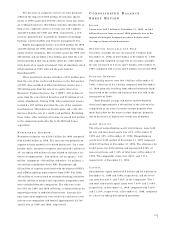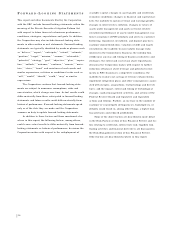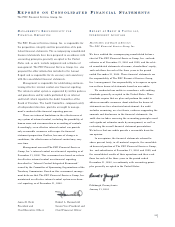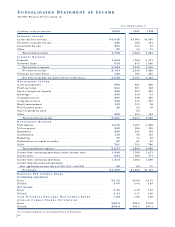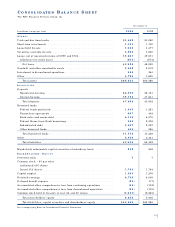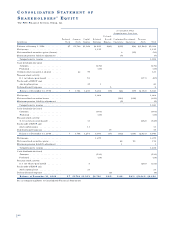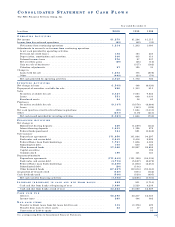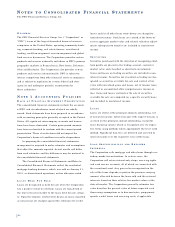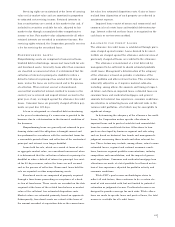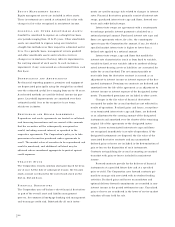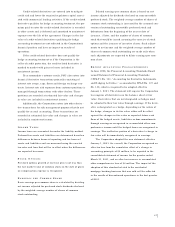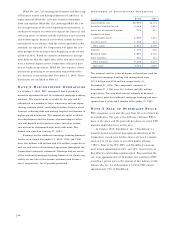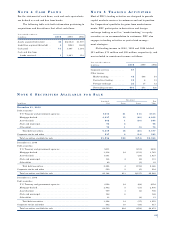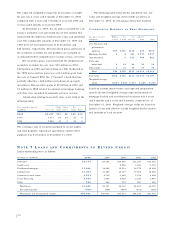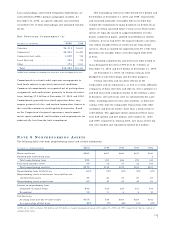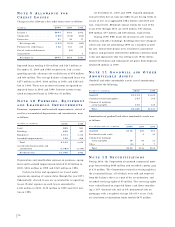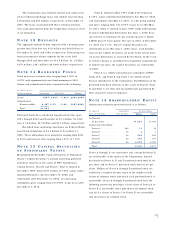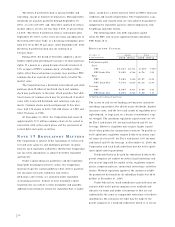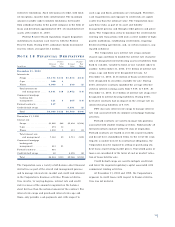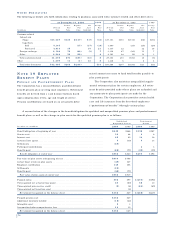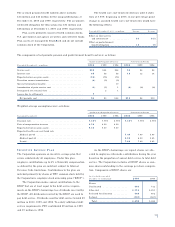PNC Bank 2000 Annual Report Download - page 70
Download and view the complete annual report
Please find page 70 of the 2000 PNC Bank annual report below. You can navigate through the pages in the report by either clicking on the pages listed below, or by using the keyword search tool below to find specific information within the annual report.
67
Credit-related derivatives are entered into to mitigate
credit risk and lower the required regulatory capital associ-
ated with commercial lending activities. If the credit-related
derivative qualifies for hedge accounting treatment, the pre-
mium paid to enter the credit-related derivative is recorded
in other assets and is deferred and amortized to noninterest
expense over the life of the agreement. Changes in the fair
value of credit-related derivatives qualifying for hedge
accounting treatment are not reflected in the Corporation’s
financial position and have no impact on results of
operations.
If the credit-related derivative does not qualify for
hedge accounting treatment or if the Corporation is the
seller of credit protection, the credit-related derivative is
marked to market with gains or losses included in
noninterest income.
To accommodate customer needs, PNC also enters into
financial derivative transactions primarily consisting of
interest rate swaps, caps, floors and foreign exchange con-
tracts. Interest rate risk exposure from customer positions is
managed through transactions with other dealers. These
positions are recorded at estimated fair value and changes
in value are included in noninterest income.
Additionally, the Corporation enters into other deriva-
tive transactions for risk management purposes that do not
qualify for accrual accounting. These transactions are
recorded at estimated fair value and changes in value are
included in noninterest income.
IN C O M E TA X E S
Income taxes are accounted for under the liability method.
Deferred tax assets and liabilities are determined based on
differences between financial reporting and tax bases of
assets and liabilities and are measured using the enacted
tax rates and laws that will be in effect when the differences
are expected to reverse.
ST O C K OP T I O N S
For stock options granted at exercise prices not less than
the fair market value of common stock on the date of grant,
no compensation expense is recognized.
EA R N I N G S P E R CO M M O N SH A R E
Basic earnings per common share is calculated by dividing
net income adjusted for preferred stock dividends declared
by the weighted-average number of shares of common
stock outstanding.
Diluted earnings per common share is based on net
income adjusted for dividends declared on nonconvertible
preferred stock. The weighted-average number of shares of
common stock outstanding is increased by the assumed con-
version of outstanding convertible preferred stock and
debentures from the beginning of the year or date of
issuance, if later, and the number of shares of common
stock that would be issued assuming the exercise of stock
options and the issuance of incentive shares. Such adjust-
ments to net income and the weighted-average number of
shares of common stock outstanding are made only when
such adjustments are expected to dilute earnings per com-
mon share.
RE C E N T AC C O U N T I N G PR O N O U N C E M E N T S
In June 1998, the Financial Accounting Standards Board
issued Statement of Financial Accounting Standards
(“SFAS”) No. 133, “ Accounting for Derivative Instruments
and Hedging Activities,” as amended by SFAS No. 137 and
No. 138, which is required to be adopted effective
January 1, 2001. The statement will require the Corporation
to recognize all derivatives on the balance sheet at fair
value. Derivatives that are not designated as hedges must
be adjusted to their fair value through earnings. If the deriv-
ative is designated as a hedge, depending on the nature of
the hedge, changes in its fair value either will be offset
against the changes in fair value or expected future cash
flows of the hedged assets, liabilities or firm commitments
through earnings or recognized in accumulated other com-
prehensive income until the hedged items are recognized in
earnings. The ineffective portion of a derivative’s change in
fair value will be immediately recognized in earnings.
The Corporation adopted the new statement effective
January 1, 2001. As a result, the Corporation recognized an
after-tax loss from the cumulative effect of a change in
accounting principle of $5 million, to be reported in the
consolidated statement of income for the quarter ended
March 31, 2001, and an after-tax increase in accumulated
other comprehensive loss of $4 million. The impact of the
adoption of this standard related to the residential
mortgage banking business that was sold will be reflected
in the results of discontinued operations in the first quarter
of 2001.


